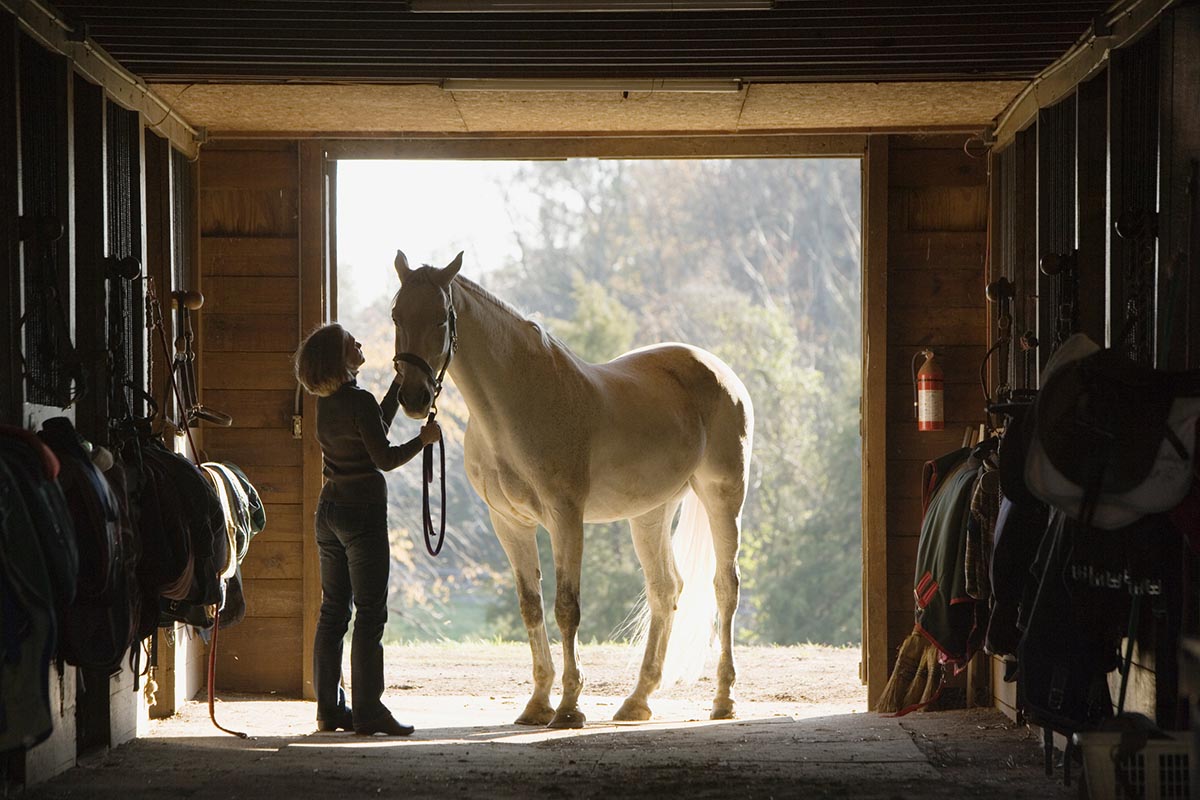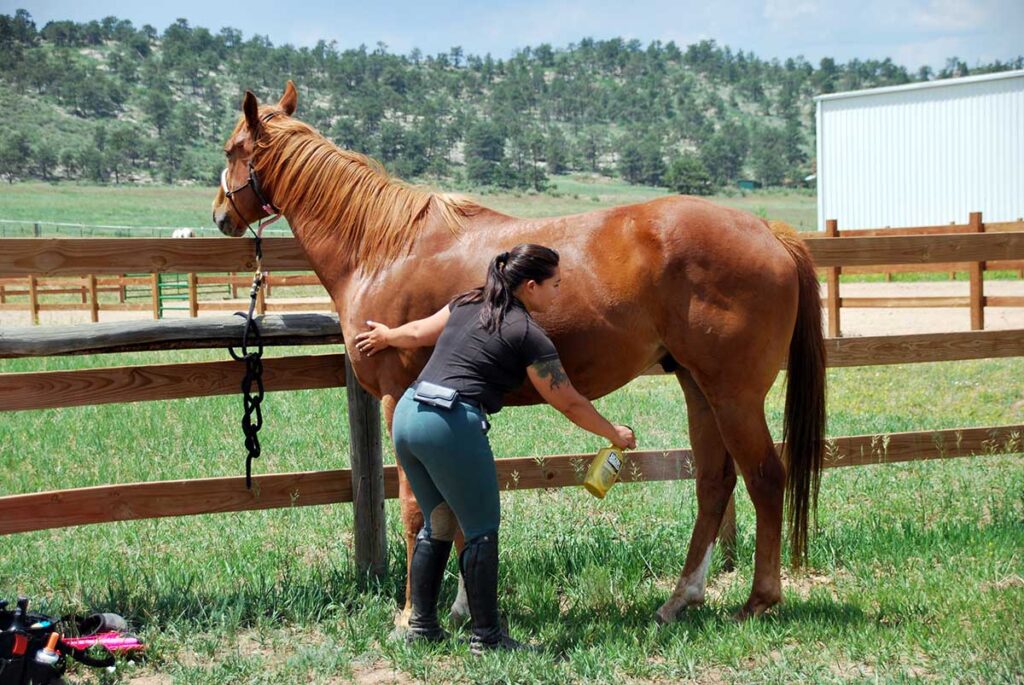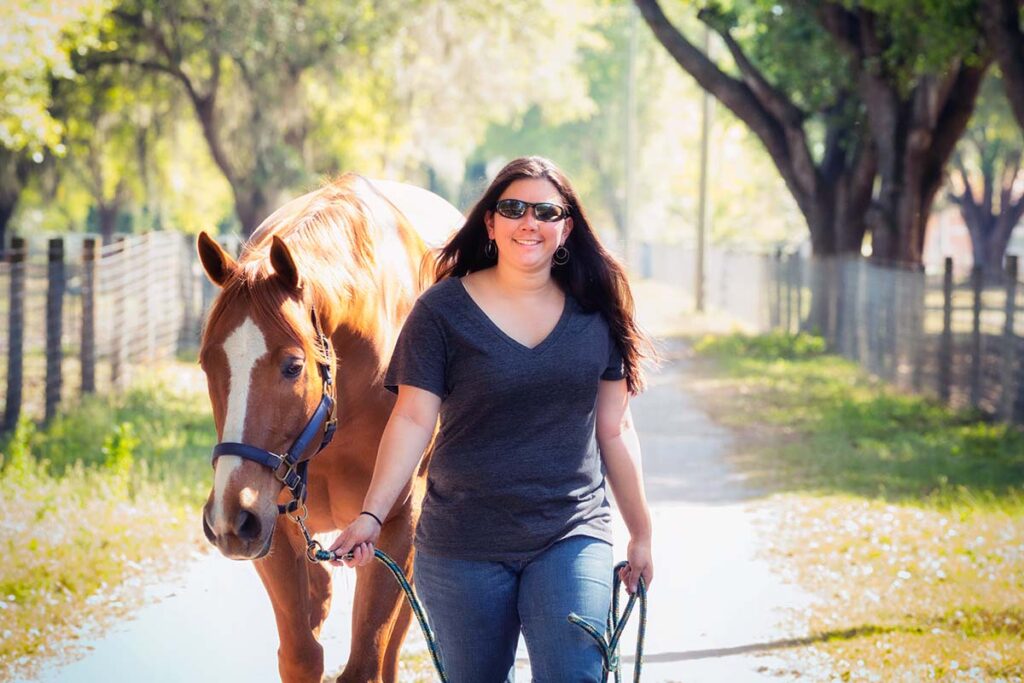Level-headed and well-trained, older horses often make the foray into ownership easy. Many, however, require different diets than their younger counterparts. But don’t worry, feeding older horses doesn’t need to be rocket science. In fact, it’s not much different than feeding younger horses: “You give the horse what he needs, letting the individual animal dictate your decisions,” says Sarah Ralston, VMD, PhD, equine nutritionist and retired professor at Rutgers University.
That said, age—or the infirmities associated with it—can influence your horse’s dietary needs. “Many of the conditions affecting older horses can be managed, at least in part, with changes to their diet,” says David Trachtenberg, DVM, owner of Trachtenberg Veterinary Associates, in Orchard Park, New York. “Of course, good nutrition supports overall health, but in some instances with older horses, dietary changes can play a very specific role in treatment.”
Here are four conditions common in older horses that call for specific approaches to nutrition. Although for some—such as weight loss—the dietary connection is obvious, others may not seem at first to be a nutritional concern. But a careful review of each will leave you prepared to adjust your older horse’s diet to help him live as long and healthy a life as possible.
1. Cushing’s Syndrome

Ralston estimates that up to 70% of horses age 25 or older have some degree of pituitary pars intermedia dysfunction (PPID), commonly known as Cushing’s syndrome. A well-formulated diet can help alleviate some health problems associated with the condition, which is caused by a malfunction of the pituitary gland.
“Because of hormone imbalances, a horse with Cushing’s is much more susceptible to developing laminitis,” says Trachtenberg. “In addition to getting them started on medications, you have to be extremely careful with pasture, hay and grain. Excess starches and sugars can lead to devastating founder.”
Horses with PPID may benefit from commercial feeds formulated to have a low glycemic index, meaning they produce only small fluctuations in blood glucose and insulin levels, but Ralston advises reading the labels carefully. “You need a feed that is low in nonstructural carbohydrates (NSC)—the starches and sugars—no matter if they come from corn, oats or molasses,” she says. “You may want to have your veterinarian call the feed company and ask very specific questions.”
In addition, if your horse is insulin resistant, you may need to reduce his intake of NSCs by soaking his hay and/or restricting his access to pasture. However, Trachtenberg says most of the Cushing’s horses he sees do not need this degree of control, especially if they are treated with pergolide, which stabilizes their metabolic responses.
Trachtenberg has firsthand experience managing PPID using dietary adjustments. In one particularly difficult case, nutrition proved to be a pivotal factor. “The horse was only in his teens, but he had Cushing’s, which puts him in the ‘old horse’ category for me,” says Trachtenberg. “Everyone thought he was ‘creaky’ because of arthritis, but he had slow-onset laminitis as a result of his Cushing’s. In addition to treating him with anti-inflammatories and farriery work, we started soaking his hay and put him on a low NSC feed. He didn’t respond much at all. So we switched him to another concentrate that had an extremely low NSC, lower than you’d think he’d require. That finally helped; over a period of months he got better and better. The difference was we were willing to go back and adjust his diet a second time.”
2. Inadequate Chewing
“You can’t really talk about nutrition in older horses without talking about teeth,” says Trachtenberg. “It doesn’t matter what you’re feeding them, if they can’t chew it, it’s like you’re not feeding them at all.” After a long lifetime, older horses are likely to have missing, worn and otherwise malformed teeth, which can make it difficult to chew food, particularly hay. Unable to derive sufficient calories and other nutrients from his ration, the horse will lose weight and may develop other health issues.
Both Trachtenberg and Ralston recommend twice-a-year dental checkups for older horses. “In my experience, it takes a fairly significant abnormality to get a horse to stop eating, but unless you sedate and look carefully with a speculum, you may not find it,” says Trachtenberg, who recalls examining an older horse for chronic weight loss and finding a hook on a tooth so severe that it was embedded in the horse’s soft palate. “We removed that, and he suddenly got his appetite back.”
In other cases, natural wear limits the functionality of a horse’s teeth. When this occurs, Trachtenberg often recommends a switch to complete feed formulated for digestibility, along with hay. “The horse gets the nutrition from the complete feed but is still able to chew and enjoy the hay. As long as he’s not choking on the hay, it will keep him happy.” He notes that grass seems to be easy to chew even for horses missing most of their teeth. “I’m not sure how they do it, but I’ve seen nearly toothless horses successfully grazing. So if laminitis isn’t a concern, turn those old guys out.”
Beet pulp is also an option for horses who can no longer chew hay, but Ralston warns about the high sugar content of some products. “Beet pulp is a fine substitute for roughage or hay,” she says, “but if the horse has any pituitary or metabolic issues, you have got to be entirely sure that it doesn’t contain added molasses. That might trigger a laminitic episode in severely affected horses.”
3. Weight Loss
Older horses often have trouble maintaining or gaining weight, but the reason usually has little to do with advanced age. “A horse shouldn’t have ribs showing just because he’s 35 years old,” says Ralston. “But many people are willing to accept that. You always need to look for the underlying reason.”
Trachtenberg remembers being called to see a 30-year-old horse with a body condition score (BCS) of 2. “When I see a horse in that shape, I automatically see if there is an abuse situation, but the other horses on the farm were in good shape,” he says. “The horse was being given what for many would be an ample amount—two quarts of a senior feed, a cup of a sweet feed and a weight-builder supplement—so I started looking for a specific medical issue that could be the cause of his condition.” Not only did the horse have bad teeth, but a fecal egg count revealed he had extensive parasites, despite being on a deworming program.

“There is a tendency to think, ‘He’s an older horse, he’s on a senior feed, he’s dewormed, he should be doing fine,’ but apparently, what was working for the rest of the horses wasn’t working for this guy,” says Trachtenberg. With the parasites cleared and dental work done, the horse was ready for a gradual move to a new diet.
“This horse couldn’t break down and digest hay, so he had to get all his calories and nutrients from grain,” says Trachtenberg. “I had the owners switch to a highly digestible extruded senior feed and gradually increase his ration. Every four days we’d increase his grain by a quart until he appeared to be gaining weight. Eventually, he was getting eight quarts a day. People’s eyes get big—they think you can’t feed that much, but if it takes eight quarts for an older horse to pick up and keep weight, that is what you need to feed.”
Within about two months the old horse had a BCS of 4, and a few months later he was up to a solid 5. “His entire health improved; with such a low body condition, he was probably immunosupressed,” says Trachtenberg. “In the state I first saw him, many people might have decided it was just the end for that old horse, but by fixing a few problems and changing his diet, he may have gained another healthy 10 years.”
Ralston cautions, however, that before increasing a horse’s concentrate intake significantly, it’s wise to look into what may be behind his unthriftiness, such as liver and kidney dysfunction: “There is always a reason for the problem. It may be as serious as organ failure or it may be something as simple as a bad tooth. Until you look into it, however, there is no way to know, and the poor horse continues to decline.” If a greater concentrate load is called for, Ralston advises choosing a complete feed and offering no more than 0.5 percent of the horse’s body weight per feeding.
4. Equine Asthma

Equine asthma, also known as heaves, can occur at any age, but older horses are more likely to have extensive scarring of the lungs, making the condition more severe. Minimizing dust in the environment is the key to managing a heavey horse, and feed is a notorious source of these airborne particles. Studies have shown that as a horse roots around for a mouthful of even good-quality hay, he can stir up dust levels known to induce heaves, and the puff of dust that rises as dry pellets are poured into a feed tub go straight up the eager horse’s nose as he dives into his meal.
That’s why feeding an older horse with heaves requires a liberal application of water—to practically everything he eats. “Wetting down hay can be a pain, particularly in colder climates, but it really does work,” says Trachtenberg.
Alfalfa cubes are an alternative, but those that come from the bottom of the bag, where crushing can occur, may also be dusty. Grain, too, can pose a dust problem. But a sprinkling of water after the ration is poured into a feed tub can help, as can mixing in soaked beet pulp. On the other hand, complete feeds, particularly those moistened with fat or molasses, can be virtually dust-free. Whatever option you choose, consistency is key when feeding a horse with heaves. One dusty meal can trigger an attack that takes weeks of treatment to reverse.
Take-Home Message
Feeding older horses doesn’t have to be complicated,” says Ralston. “There are great senior products out there for horses who need them. And for those who don’t, there’s a multitude of other options. If anything, people get overwhelmed by all the choices. But if they just let the horse’s needs direct their decisions, they aren’t going to go wrong.”
This article originally ran on EQUUSMagazine.com.
Are you enjoying this content? Sign up for My New Horse’s FREE newsletter to get the latest horse owner info and fun facts delivered straight to your inbox!








